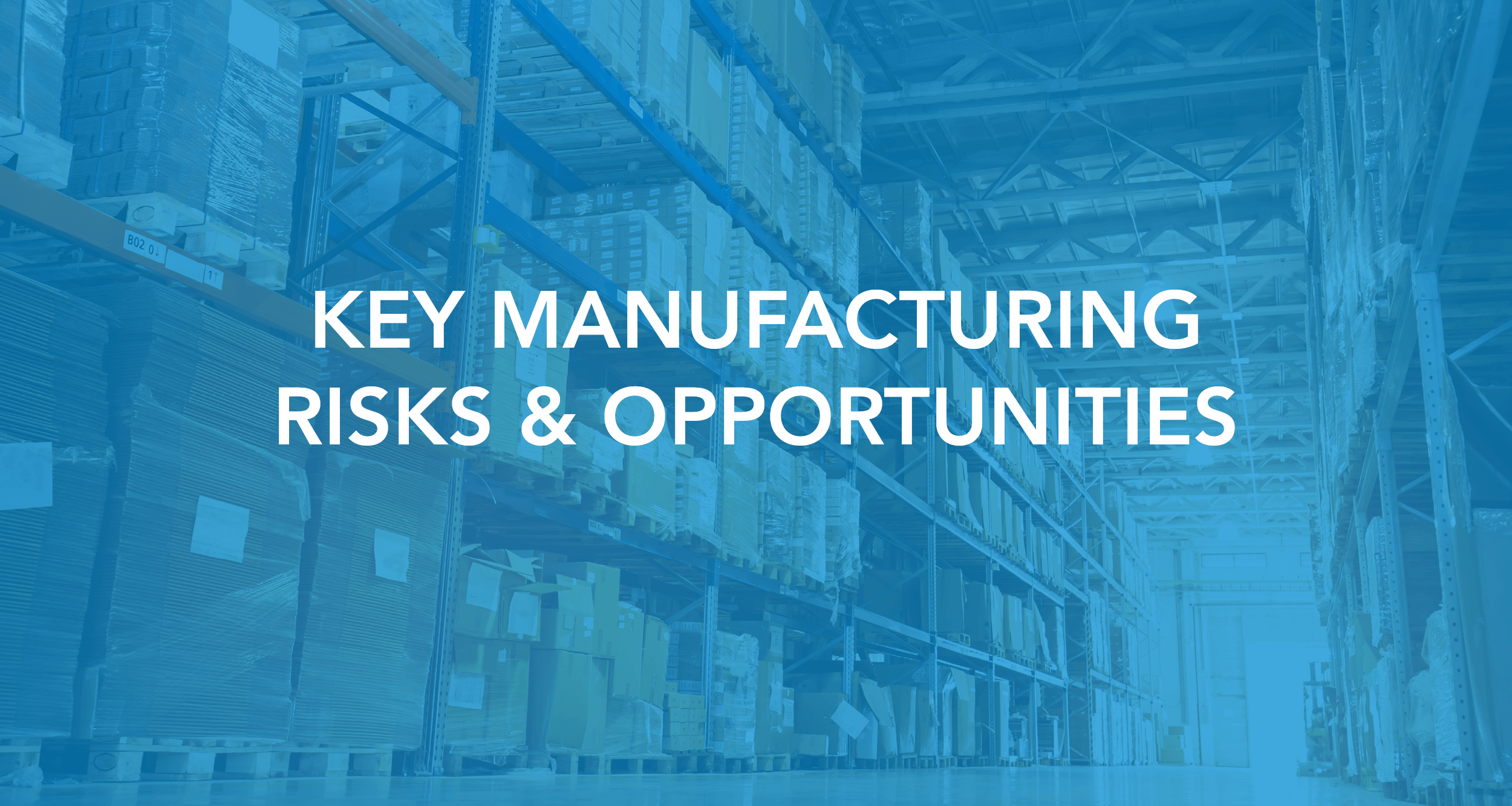The Manufacturing industry faces challenges and risks that are unique from any other industry. Since manufacturing is a vital spoke in the global economy and an essential component of many other industries, risks to manufacturers tend to have a much larger ripple effect. If risks go unaddressed they can lead to operational and financial losses throughout our economy, not to mention damage to the reputation of the company. It’s important for manufacturers to be aware of the basic and evolving risks they may face and take appropriate steps to mitigate them.
Some key risks include:
- Supply chain constraints
- Attracting and retaining quality workforce
- Cyber security threats
- Inflation
Our team of Manufacturing Experts have put together a risks overview so you can explore the risks to the manufacturing industry in detail and search for opportunities for growth as we cruise through 2023.
| Risk | Description |
|---|---|
| Supply Chain Constraints Parts/materials difficult to find/long lead times. |
|
| Attracting & Retaining Quality Workforce Labor challenges experienced through a shrinking pool of applicants, aging workforce and shortage of highly skilled workers. |
|
| Cyber Security Rise in cyber security incidents across manufacturing companies. |
|
| Technology Technology continues to evolve with endless possibilities. |
|
| Environmental, Social, Governance (ESG) A sustainability mind-set becomes more of a focal point. |
|
| Product as a Service (PaaS) Diversifying revenue sources has become more important in establishing an indefinite future. |
|
| Inflation Manufactures have to integrate higher priced materials into budget and determine how much to increase prices to customers to absorb these cost increases. |
|
| Possible Recession Managing through a potential slowdown in the economy will be a focal point of 2023. |
|
